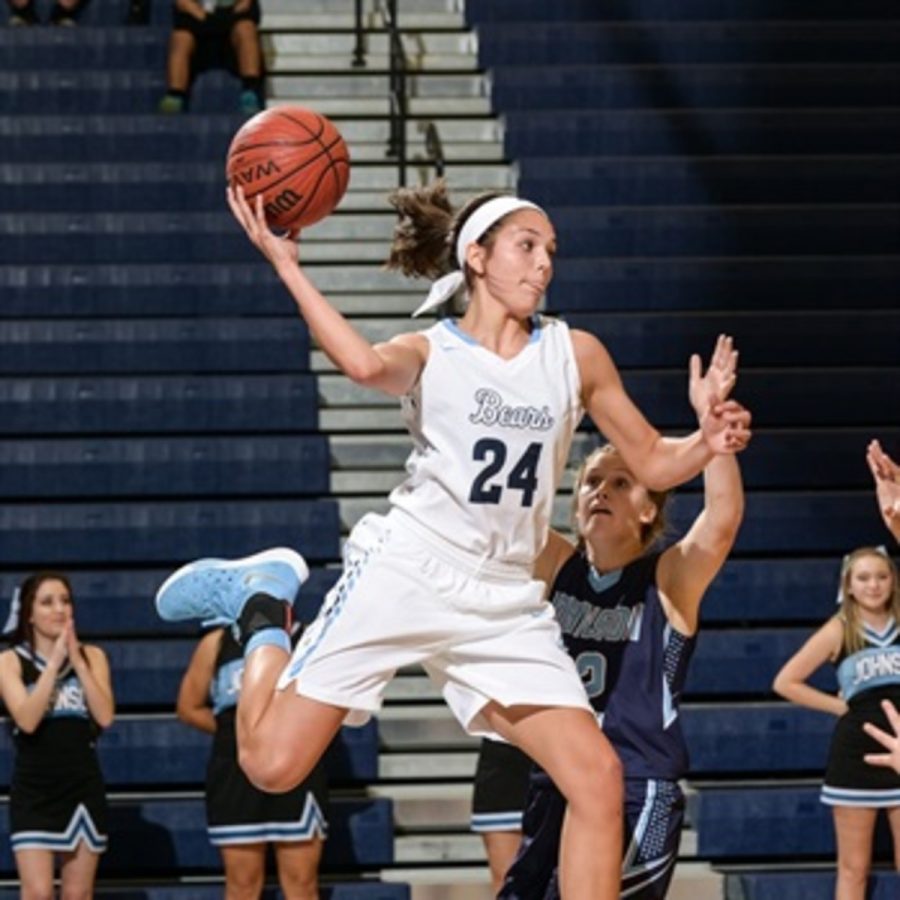Part 7: Sports and School
May 18, 2017
For most athletes, finding a middle ground between academics and athletics can be a challenge.
Several star athletes said the stress from extracurricular activities affects their results in the classroom.
“Days, where I have practice, are way more stressful than days without. Those are nights where I’m too tired to do anything, so I push my work away until the morning,” said varsity basketball player Sierra Sieracki.
Sierra, a junior, said the pressure to give her best performance on the court and in the classroom can sometimes be overwhelming.
“I partly play basketball for college. I always feel so much pressure to perform well in order to get a college scholarship,” said Sieracki.
Sieracki has been playing basketball since she was in fourth grade, and she said she intends to play through college, although she hasn’t committed to any school.
The past seven years of her life have been a cycle of two things: basketball and school. Sieracki has faced anxiety in the past due to her tight schedule, in which she must juggle sports and studies.
“It’s hard to balance things sometimes,” Sieracki said. “I could get one step off the track and it messes everything up.”
Sieracki’s coach of the past three years said stress has taken a toll on several of the athletes she has trained.
“There are definitely times when players are affected by anxiety or stress at either practice or a game, and it can hinder performance,” Women’s Varsity Basketball Head Coach Lesley Broadwell said in an email.
However, Broadwell also said stress can lead to positive results on the court by providing an outlet for everything causing the stress.
“I try to tell athletes to let the court or field be your oasis where you let stress go once you are out there — whether it’s anxiety over grades, friendship issues, boyfriend, family issues — we have to learn how to handle them,” Broadwell wrote.
Senior varsity volleyball player Lauren Swift said she has grown accustomed to the mix of school and sports in her schedule.
“Playing four hours a day for three days a week can be tiring. I miss assignments sometimes and I have to figure out a way to do it later,” said Swift.
Since she was 11, Swift has had the pressure of balancing academics and athletics.
But Swift doesn’t consider the situation negative all the time. She says the system works for her and, in the end, has been rewarding.
Like Sieracki and Swift, other athletes said they have dealt with stress from extracurricular activities. Swim team captain Sean McGinty has been swimming at the school for four years. This experience has taught him how he needs to prepare to do well, both in school and in the pool.
“I started swimming for the school team freshman year. By senior year I pretty much knew what I had to do to keep my grades up,” said Mcginty.
Fortunately for McGinty, he didn’t drive himself into the ground while dealing with both academics and athletics.
McGinty may have lost sleep some nights, but he said that looking back at his athletic experience, he doesn’t believe this hurt his overall health or sleep patterns.
Despite the obvious stress that school athletics brings, McGinty prefers to see it in a positive light.
“But it goes both ways,” said Mcginty, “When I swim, I usually work off some of the stress that I get from school.”
